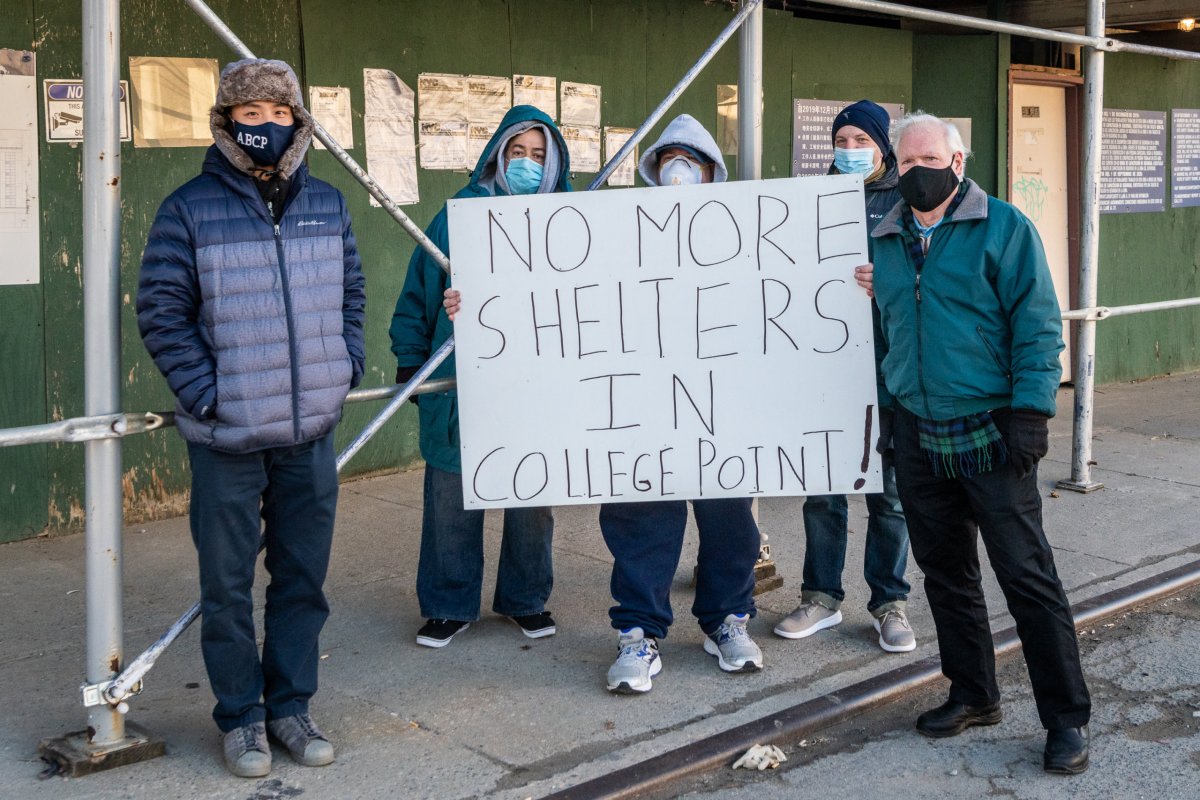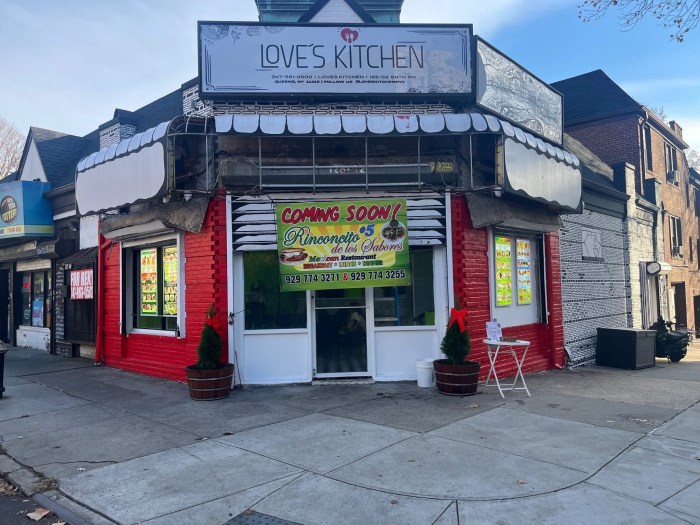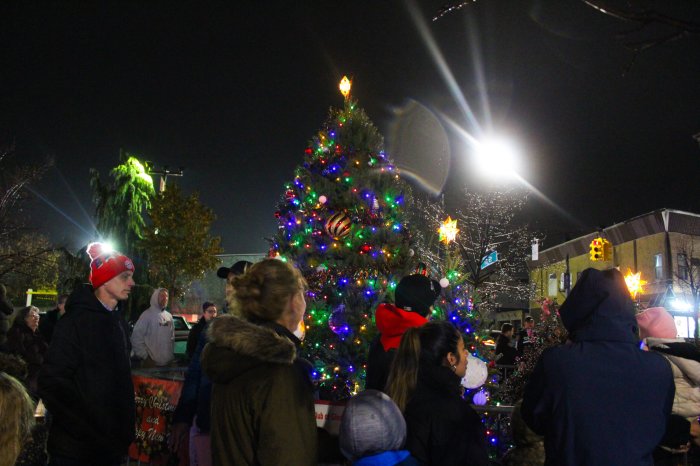Tensions were high during a joint meeting of the Queens Borough Board and Cabinet in Kew Gardens on Monday, July 10, as members listened to a presentation from the New York City Department of Social Services (DSS), which addressed the ongoing issue of homelessness throughout the borough and efforts to provide shelter to these constituents.
Led by Marricka Scott, the deputy commissioner of intergovernmental and legislative affairs for the NYC DSS, the presentation began with background information about the agency’s resources and encouraging feedback from the board and cabinet.
“We communicate with you guys all the time,” Scott said. “At all government levels and on the legislative side, we want to make sure that we are working toward legislation that is to the benefit of our clients and the agency at large.”
During the presentation, Scott shared that the NYC Department of Homeless Services (DHS) offers intake shelters to single men and adult families at 400-430 East 30th St. in Manhattan; single women at 1122 Franklin Ave. in the Bronx; and families with minor children at 151 East 151st St. in the Bronx.
Queens Borough President Donovan Richards, the chair of both the Board and Cabinet, questioned if there was progress to bring an intake shelter to Queens, something previously requested to eliminate the challenge of homeless Queens constituents having to travel to the Bronx. Scott shared that there are two bills in the City Council to address this need, but they are still under consideration.
“It can be done. I’m sure we’re not the only place in the country where this exists,” Richards said. “It must be done because you should not have to leave Queens to go to the Bronx … it’s unfair.”
The conversation, however, quickly shifted to address DSS’s recent efforts to provide emergency shelter to asylum seekers after Richards raised the issue, asking if every Queens council district has a migrant shelter. After Richards, Community Boards Director Maricela Cano asked similar questions, including how many shelters are there in Queens overall and how many of the asylum seekers are in Queens.
Scott responded to these inquiries saying she did not know for sure and could not provide exact numbers, but would follow up with them. Shortly after, Richards left the meeting to attend another commitment, handing the meeting over to Deputy Borough President Ebony Young.
Lynette Shelborne-Barfield, the director of strategic partnerships for Council Speaker Adrienne Adams of District 28, continued the conversation, asking Scott once more to find out if there are migrants in every council district.
“We are a city in crisis,” Shelborne-Barfield said. “I’m just a little concerned that at this point, we are servicing — with our tax dollars — unidentified folks. Where are they? Where’s the data?”
Community Board 1 District Manager Florence Koulouris echoed this concern, adding that she finds it “very offensive” that the community boards are not contacted when asylum seekers are placed within their districts, resulting in angry phone calls from constituents.
“We are not saying no. We are not saying don’t bring them,” Koulouris said. “But we should be able to have a civilized conversation with the constituency who lives in our district when these individuals are coming into our district.”
Koulouris then clarified she does not blame the agency, which she referred to as “fantastic,” but is instead frustrated with city government and unsure of who to contact for clearer information. Scott responded positively, encouraging Koulouris and the other Board and Cabinet members to be tenacious in reporting encampments to 311 and the agency so they can assist asylum seekers attempting to reside in public spaces.
“That’s helpful to our outreach teams,” Scott said. “Send it to us. We will engage regularly.”
Community Board 3 Chairperson Frank Taylor, however, did not react as positively, going as far as to call the agency “the worst in New York City.” Taylor’s frustration stems from 10-12 shelters opening up in his district for over a decade and the lack of resources in those shelters.
“This is not something new,” Taylor said. “I think that shelters are inhumane actually because all it is is warehousing people to do what?” “It’s voluntary,” he continued. “They don’t have to participate in anything, and to me, I don’t understand that.”
Scott responded to Taylor’s frustrations by bringing up “the drivers of homelessness,” including the housing crisis. When Taylor had a puzzled look on his face, Scott added “You’re looking confused, like what does one thing have to do with the other,” which Taylor took offense to, responding, “please don’t do that,” as Scott asked Taylor to let her finish.
Scott continued her response by saying that homeless individuals have “free will” and cannot be forced to comply or participate in anything and moving away from a “not in my backyard” mentality.
“We kind of have to grow past what we think homelessness looks like and what has put someone in that position,” Scott said. “You can’t look at it from what you would do. You have to look at it from the point of the least of us, and when you look at it from what you would do, that comes from a judgmental place.”
Taylor responded to Scott that the community needs resources to support an abundance of people moving into shelters or affordable housing. He also expressed his disagreement of Scott’s definition of free will.
“When you pay your way, when you are able to stand up on your feet and do whatever you need to do, that is free will,” Taylor said. “Free will is not living off the government.”
Deputy Borough President Young agreed with Taylor, but asked if he and Scott could continue their exchange offline, and both sides expressed a willingness to continue the conversation and work together to come to a solution.
This, however, did not end the conversation about shelters, which shifted back to the frustration about not knowing how many asylum seekers are in Queens or where the shelters are located.
“We can’t get a straight answer,” Community Board 10 Chairperson Betty Braton said. “Where are they? It’s a simple thing … that should be information automatically shared with the elected officials [and] with Borough Hall.”
Shelborne-Barfield then reiterated her point from earlier about the importance of finding out how many asylum seekers there are in Queens and where they are dispersed throughout the borough.
“Yes, you gave us a call, but at the end of the week, I still can’t answer that question,” said Shelborne-Barfield. “All we’re asking, for the constituents who ask us, is what are those numbers per community board and then at the end of that same chart, you write dispersed in how many units, how many places.”
As the meeting came to a close, Young expressed a desire to improve communication between both sides.
“We have to agree that we do need better communication,” Young said. “We have to do better at that, and we need to follow up.”




































